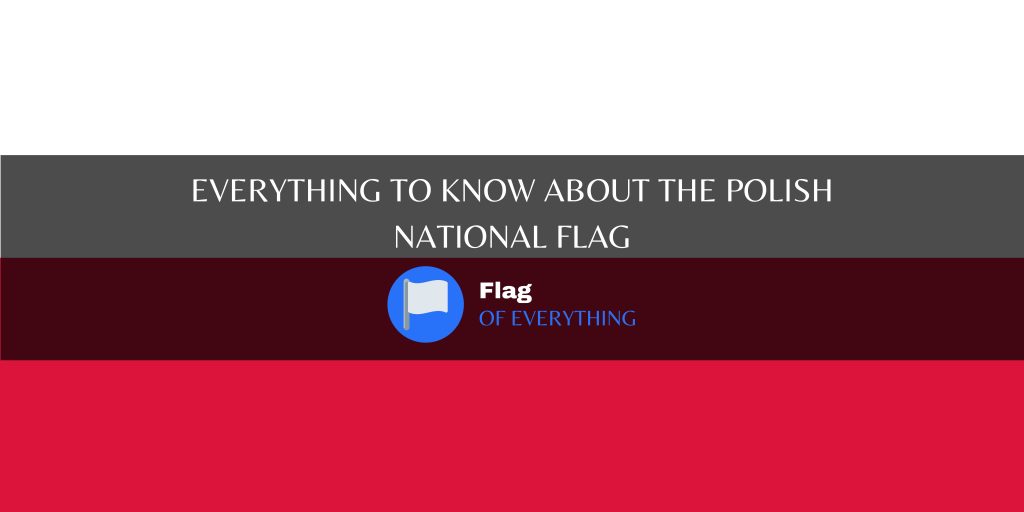The Polish national flag, a simple yet striking banner of white and red, holds a special place in the hearts of the Polish people. In this exploration, we’ll uncover the significance and history of the correct Polish flag while addressing common questions related to its design and symbolism.
The correct Polish national flag consists of two horizontal bands of equal width – white on the top and red on the bottom. This design, known as the “Polski Szlachetny” or the “Noble Polish,” is the official flag of Poland and symbolizes the nation’s values and history.
The national flag of Poland has traditionally featured only the white and red horizontal bands, without any additional symbols or emblems. However, the white eagle, known as the “Orzeł Biały,” is an important national emblem of Poland and is prominently featured on the Polish national coat of arms.
The Polish national flag carries profound symbolism. The white color represents purity, peace, and noble ideals. The red color symbolizes valor, bravery, and the enduring spirit of the Polish people. Together, these colors reflect Poland’s rich history, values, and aspirations for a free and prosperous nation.

What is the shape of the polish national flag?
The Polish national flag exhibits sharpness and keenness in its design. It features two horizontal stripes, with the upper stripe being white and the lower stripe red. These stripes have well-defined, crisp edges, creating a clear and instantly recognizable national symbol.
The Polish flag embraces angularity through its rectangular shape and the sharp division between its white and red horizontal stripes. The flag’s sides form right angles, symbolizing order, stability, and Poland’s historical commitment to its values.
The Polish flag does not display narrowing. Its width remains consistent from top to bottom, emphasizing a balanced and harmonious appearance that signifies unity and continuity.
The Polish national flag does not prominently incorporate curvature or curves. Its design relies on straight lines and a simple two-stripe pattern, emphasizing clarity and straightforward symbolism.
The Polish flag does not emphasize roundness in its design. The flag’s elements, primarily the two horizontal stripes, are characterized by sharp angles and distinct edges, reflecting Poland’s uncomplicated and historic symbolism.
The Polish flag is characterized by straightness in its design, with its precise white and red horizontal stripes. These straight lines represent Poland’s commitment to order, tradition, and the values that have shaped the nation.
The Polish flag does not showcase stratification. It consists of two equal horizontal stripes, making it a straightforward and unified design that underscores the importance of national unity and equality among its people.
How wide is the polish national flag?
The width of the Polish national flag, often referred to as the “Flag of Poland” or “Biało-czerwona” (White-Red), holds significance, measuring approximately 4.92 feet or 1.5 meters in standard scales. This width allows the flag to be prominently displayed during national events and celebrations, symbolizing Poland’s history, unity, and national pride.
How high is the polish national flag?
The height of the Polish national flag stands at around 3.28 feet or 1 meter in standard scales. This balanced height complements its width, ensuring that the flag’s design is presented with precision and respect, embodying Poland’s commitment to democracy, independence, and heritage.
What is the aspect ratio of the polish national flag?
The Polish national flag, often known as the “Biało-czerwona,” adheres to an aspect ratio of 5:8, creating a harmonious and visually appealing design. This carefully chosen ratio ensures that the flag’s proportions remain faithful to its intended representation, symbolizing Poland’s historical legacy and national identity.
What colors does the polish national flag use?
The polish national flag has a total of 2 colors: white and red. The exact color codes are given in the table below.
| White | Red | |
| HEX | #C8102E | #DC143C |
| RGB | 244, 245, 240 | 220, 20, 60 |
| CMYK | 0, 0, 2, 4 | 0, 96, 82, 1 |
| Pantone | 11-0601 TC | 1795 |
| RAL | 9016 | 3028 |
History of the polish national flag
The history of the Polish national flag, the “Biało-czerwona,” is deeply intertwined with Poland’s quest for independence and sovereignty. The flag’s design, featuring two horizontal stripes of white and red, is one of the oldest national flags in the world. It symbolizes Poland’s enduring commitment to democracy, freedom, and its historical struggles.
When was the polish national flag created?
The modern version of the Polish national flag, with its white and red horizontal stripes, has a rich historical legacy dating back centuries. It was officially adopted as the national flag of Poland on August 1, 1919, following Poland’s restoration of independence after World War I. This date marks a historic moment when Poland embraced a symbol of its democratic values and national identity.
Who made the polish national flag?
The design of the Polish national flag, featuring white and red horizontal stripes, reflects Poland’s historical heritage and was not created by a specific individual. It symbolizes the nation’s commitment to democracy, freedom, and independence.
How much did it cost to create the polish national flag?
The creation of the Polish national flag, the “Biało-czerwona,” was not associated with a specific monetary cost, as it represents Poland’s historical journey towards democracy, independence, and national pride. It embodies the nation’s values and commitment to self-determination.
What is the meaning of the polish national flag?
There are no symbols on the polish national flag. The colors on the polish national flag and their meanings are shown below.
- White: The white color on the Polish national flag represents purity, peace, and noble ideals. It symbolizes the nation’s commitment to moral and ethical values and its aspiration for a peaceful existence. White also reflects the snowy landscapes of Poland, especially during the winter months.
- Red: The red color on the flag embodies valor, bravery, and the enduring spirit of the Polish people. It is a symbol of the sacrifices made by the nation throughout its history. Red also represents the bloodshed in the pursuit of independence and the defense of Poland’s sovereignty.
How to fly the polish national flag?
The most important etiquette of the polish flag is described below.
- Positioning: Place the flagpole securely in the ground or on a suitable mounting structure, ensuring that the flag remains visible and unobstructed.
- Orientation: When raising the flag, make sure the white band is on the top, followed by the red band on the bottom. This arrangement preserves the correct order of the Polish flag’s colors.
- Raising and Lowering: Raise the flag briskly in the morning and lower it ceremoniously at sunset. If you choose to keep it up overnight, ensure it is properly illuminated.
- Respect: Handle the flag with care and avoid letting it touch the ground. It’s a symbol of Poland’s rich heritage and should be treated with respect.
Do polish citizens respect the polish national flag?
Yes. polish citizens do respect the polish national flag. The “Biało-czerwona,” which symbolizes the nation’s history, independence, and democratic values. Displaying the flag with honor and pride is a testament to the Polish people’s dedication to democracy, freedom, and their historical legacy.
Is the polish national flag disrespectful?
No, the polish national flag is not disrespectful. On the contrary, it is a revered symbol of Poland’s democratic ideals, independence, and historical struggles. Treating the flag with dignity and respect reflects the nation’s values and reverence for its national identity and sovereignty.
What flags are similar to the polish national flag?
Below are the national flags that resemble the polish national flag.
- Flag of Indonesia: The flag of Indonesia features two horizontal bands of red on the top and white on the bottom, similar in color arrangement to the Polish flag. However, their designs and symbolism are distinct.
- Flag of Monaco: The flag of Monaco also consists of two horizontal bands, red on top and white on the bottom, resembling the Polish flag. Monaco’s flag is unique to its own history and identity.
- Flag of Singapore: The flag of Singapore includes two horizontal bands, red on top and white on the bottom, similar to the Polish flag. However, the flag of Singapore also features a crescent moon and stars in the upper-left corner.

